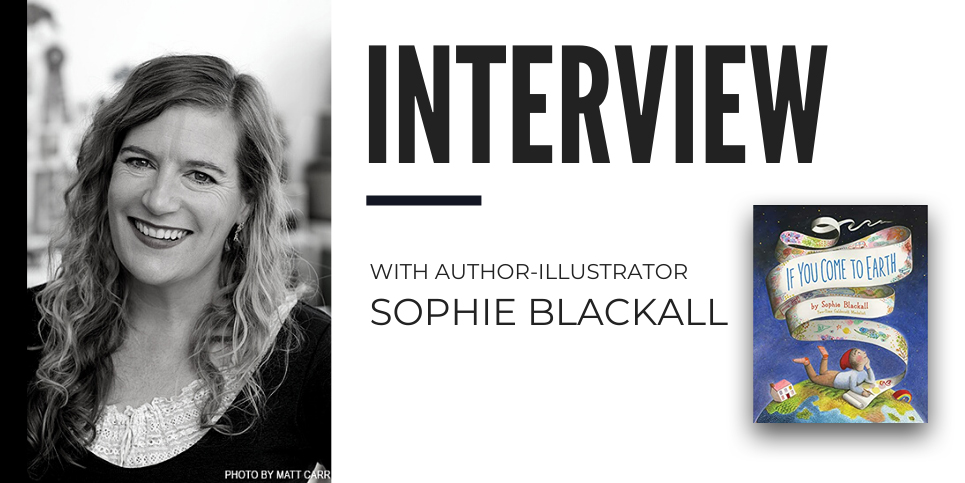Two-time Caldecott award-winning author-illustrator Sophie Blackall’s If You Come to Earth is incredibly heartwarming and highly recommended! We’re thrilled to share this conversation in which we dove deep into the book and the creative process behind it’s making. Sophie also shared some things she misses about living in Australia.
The Children’s Book Review: If You Come to Earth is your stunning new picture book perfect for the times and all ages! I read that the inspiration for it came from the thousands of children you have met during your travels around the world in support of UNICEF and Save the Children. Can you tell us a little bit about these experiences and if there was a specific moment that planted the seed for this book?
Sophie Blackall: Yes! It has been an incredible experience and an extraordinary privilege to work with UNICEF and Save the Children and to travel with them to The Democratic Republic of Congo, India, Rwanda, and Bhutan. I think about some aspect of those journeys, and the children I met along the way, every day of my life. I visited crowded dirt-floored classrooms in a school at the foot of a volcano in Rwanda, and climbed two hours up a zig-zagging path to reach a tiny one-room school in the Himalayan mountains of Bhutan. That school had only ten students. We spent the day together and though we couldn’t understand a word each other said, the children drew pictures for me and shared their lunch, and I showed them some books. I have made books about boars and babies and bears and lighthouses, but what I wanted in that moment was a book that would bring us together. A book about their home and mine. So I vowed that’s what I would make. A book about everyone and the planet we share. I didn’t realize it would take seven years!
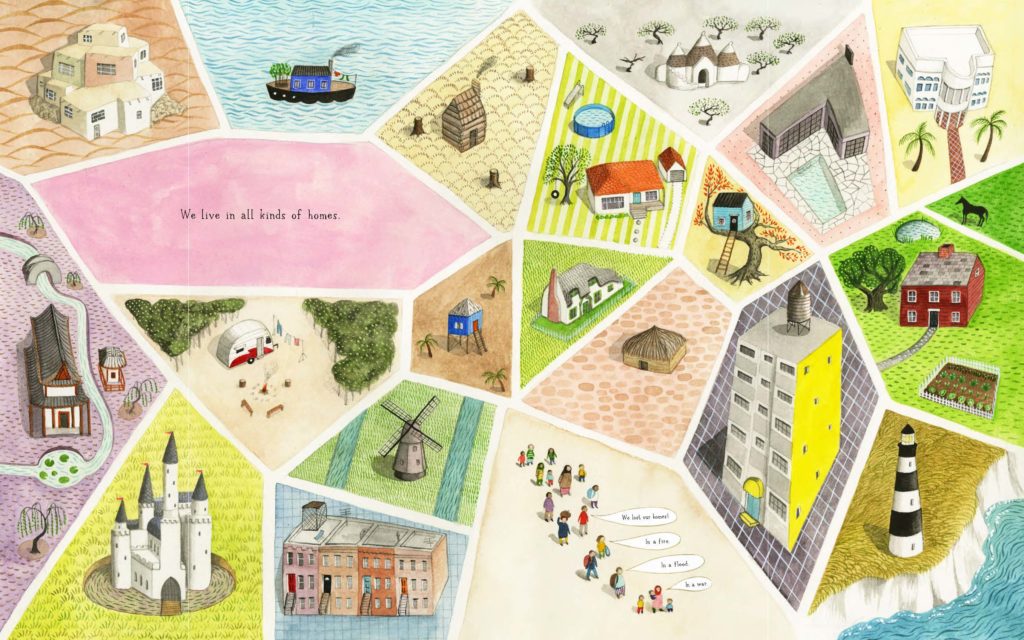
From a bedroom, around the world, and back again, the narrator guides the readers through a call-to-action to stand together, united on our beautiful planet. The book also feels like more than this. Is it?
I hope that anybody reading If You Come to Earth might recognize something of themselves in the book. And that alongside the small things they find familiar, that they will also be reminded that the world is wide and diverse and wonderful, and that it belongs to all of us. It’s the only home we have, so we should take care of it. And each other.
It is also a great big celebration of humanity. Our families and communities, our inventions and persistence, our feelings and foibles, our compassion and resilience and our ability, no matter who we are or what language we speak or how old we are, to tell a good story.
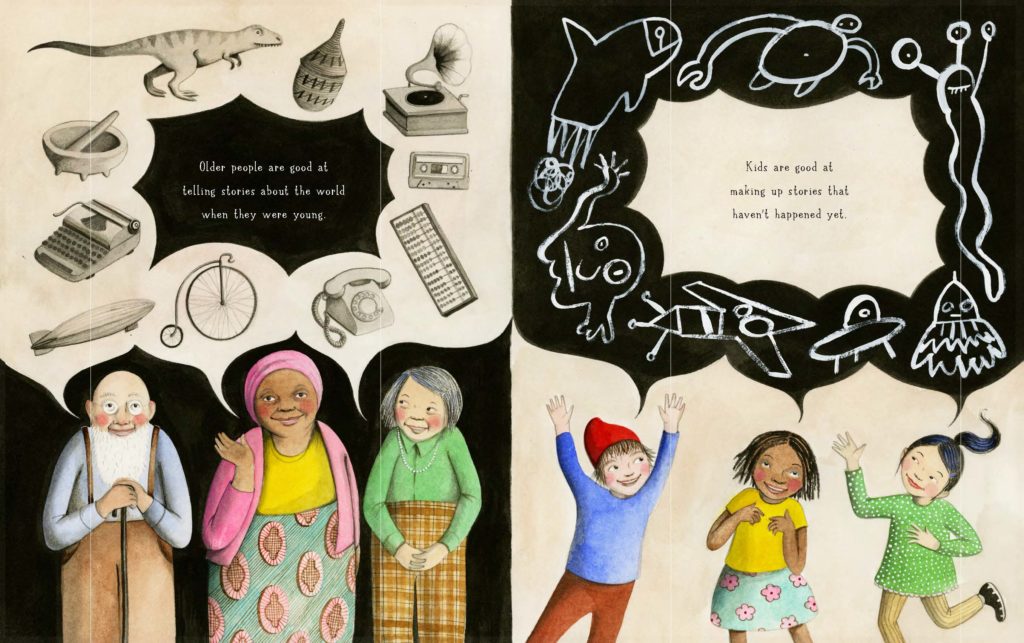
We learn about people, young and old—inclusivity and diversity, joy and pain, are all represented. It’s a compendium of all living things and the way we inhabit our world—while also offering up the sense of something greater than ourselves. How do you think you managed to pack so much in and in such a digestible way?
If You Come to Earth is the most ambitious picture book I have ever made. I wanted kids and their grown-ups to be able to read the book in ten minutes, but also to come back and spend ten minutes on each page. As a kid I loved Richard Scarry books with their crowded pages of details and as an illustrator, I love information graphics, especially 19th-century diagrams and medieval maps and mid-century science charts. I used those references for ideas on how to present detailed information in cohesive and creative ways. And so yes, the book sets out to remind us that we are all one family with one home, but along the way we learn about birds and feelings and cars and clothes and weather and water and braille and sign language and all the colors you need to paint everything in the world.
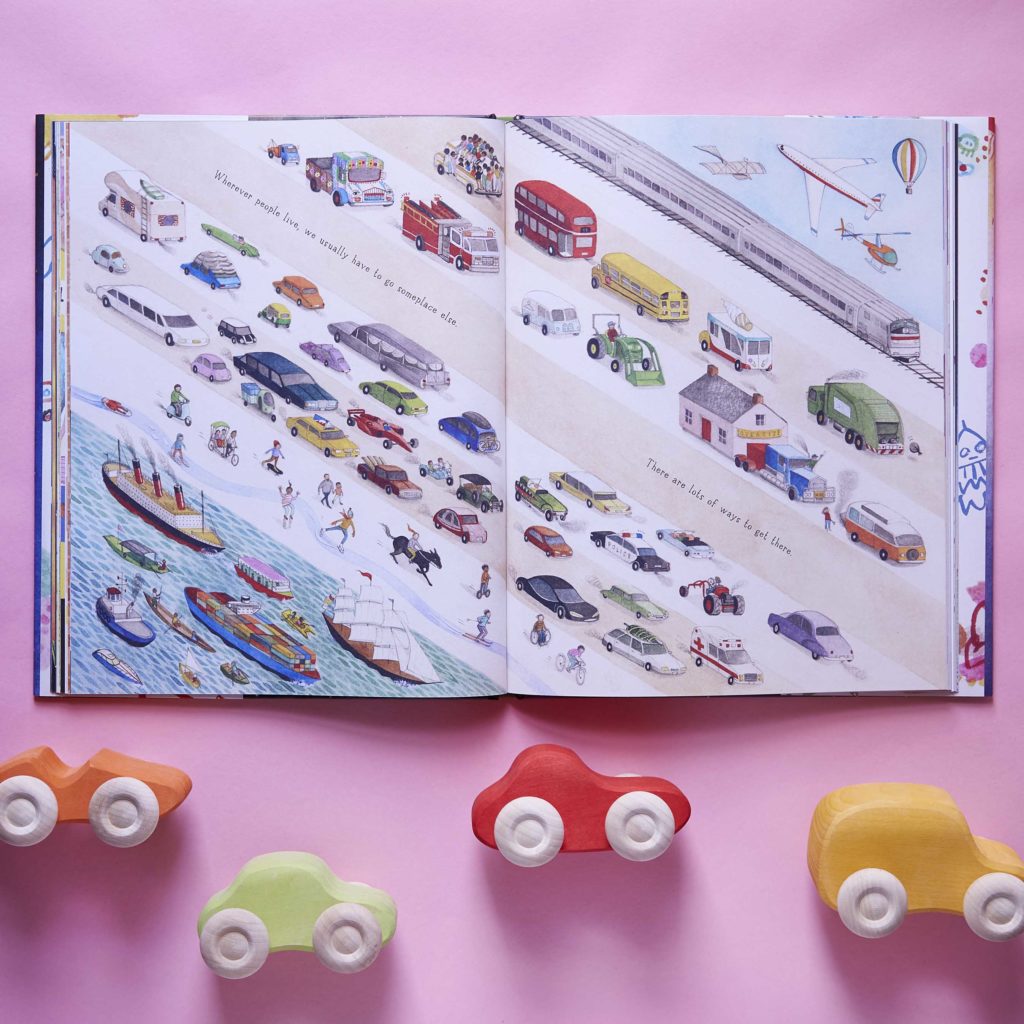
The conversations that can be prompted from reading If You Come to Earth feel rewardingly infinite. Have you had any surprising conversations with either a young reader or an adult after reading the book?
If You Come to Earth isn’t yet out as I write this, but a couple of early readers have told me their children have slept with the book, which is always the highest praise. I have sent copies to some of the real people who appear in the book and to my friend Quinn who was the inspiration for the child writing the letter to a visitor from another planet. I am also sending copies to the 23 children from the Brooklyn New School who invited me into their classroom to pick their brains for several weeks in the early stages of making If You Come to Earth. I can’t wait to hear what they all think.
Can you talk us through the choice of typeset used and the hand lettering you did?
In the beginning, I imagined the whole book might be hand-lettered, and I even asked my son to write out the alphabet to create a font. But there was this complicated dual conceit of Quinn’s letter and the real things we are seeing as they’re described and we all agreed it would be less confusing if the type were set. The font is called Halewyn and we chose it because it was child-friendly while still being really legible.
My background is in design and I’ve always enjoyed hand-lettering. I drew the hand signs for the page of American Sign Language and have redrawn several of the signs for foreign editions. Now if only I could learn to sign, that would be handy!
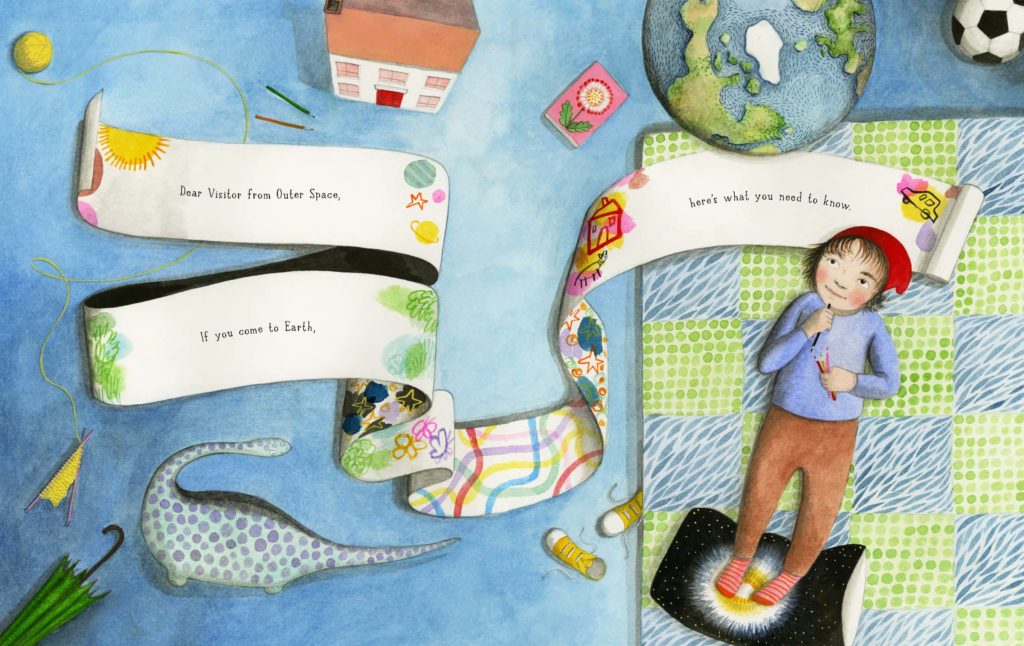
The artwork is rendered in Chinese ink and watercolor. Are these your preferred mediums?
That is my default combination, yes. But in these altered times, I have embraced drawing digitally in Procreate to facilitate sending art quickly and efficiently while we’re all separated and working from home. I’m sure I’ll go back to watercolor and Chinese ink on paper, because I miss having a physical drawing and the tactile experience of painting, but I’m surprised by how much I enjoy Procreate.
All of the intricate little details bring thoughtful prose to life in a way that is accessible for curious young minds. Delightful and varied skin tones warmed with classic Blackall-style rosy cheeks are a gorgeous depiction of global humanity. How long did it take you to complete all of the illustrations?
The whole book took seven years! Not all of that was painting of course. There was all the travel, and all the research, and all the pondering. There were some painted spreads, like the one with all the forms of transport, that took weeks alone. And the portraits of the grown-ups who make the world work, all of whom are real people, took months.
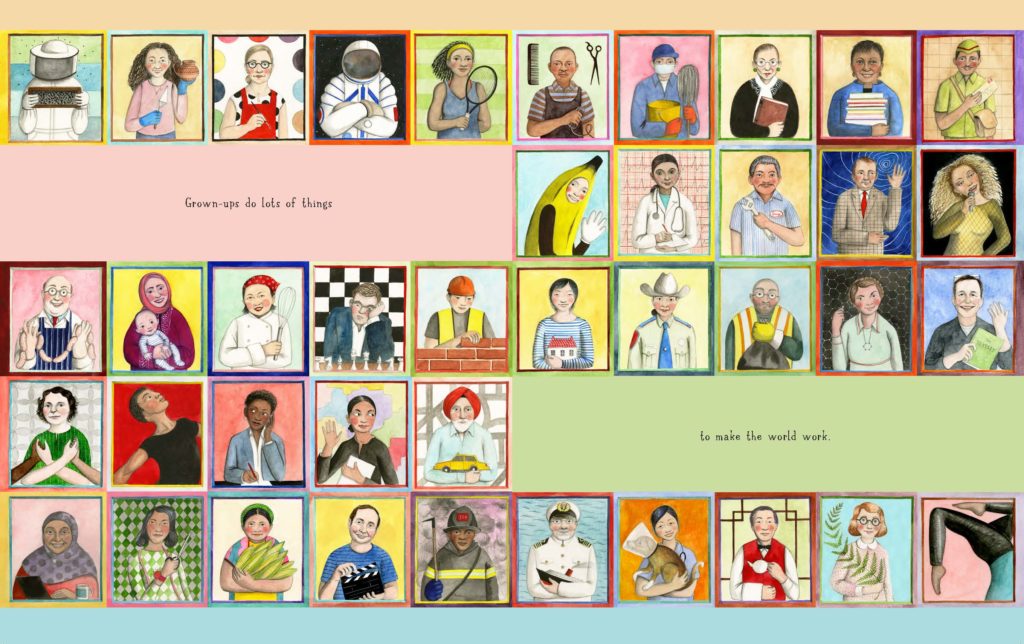
The book itself is so beautifully crafted. I love the gold embossed speckles scattered across the dark sky on the cover. Whose idea was it to add this gorgeous extra?
I am very lucky to work with editor Victoria Rock and art director Sara Gillingham at Chronicle Books. We have worked together for over a decade on the Ivy and Bean series, but this is the first picture book we’ve all three done together. It was so much fun and a true collaboration. Victoria and Sara are as thoughtful as elephants, as discerning as bower birds, and as patient as cicadas.
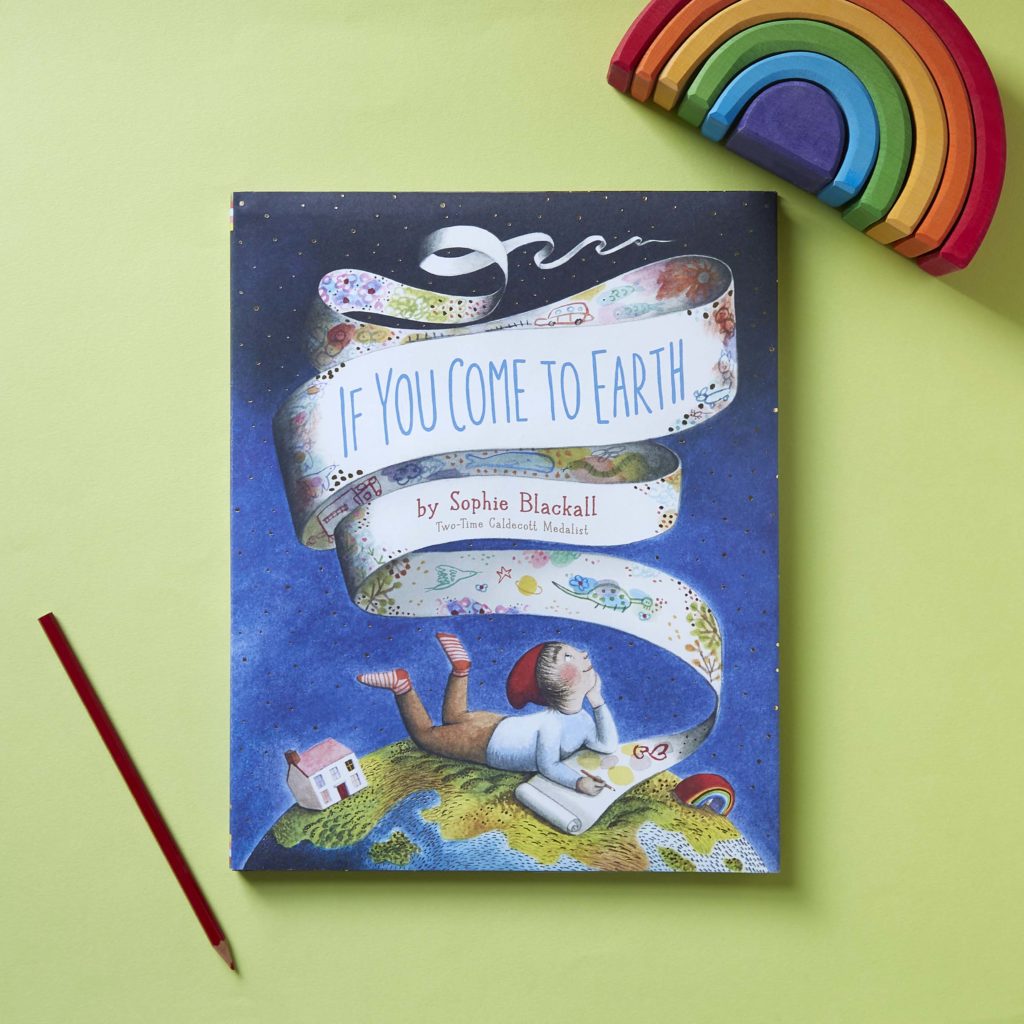
As a long-time fan, I have a few random questions for you. From one Australian to another, I’d love to know what initially brought you to the United States.
I had always wanted an adventure in New York. I didn’t expect it to last twenty years! When I arrived, I traipsed the streets of Midtown Manhattan with my portfolio, visiting publishers. But it was Chronicle Books based in San Francisco who gave me my first book. My children were born in Australia but raised here. We were lucky to win green cards in the lottery. I imagine that’s a thing of the past!
What is one thing you miss about Australia?
One thing? Only one?
You probably know by now that I like a list. So if you’ll indulge me, here are some of the things I miss most about Australia:
Gum leaves, pink meringues, the long shadows, the Australian accent, pelicans, sausage rolls, Welcome to Country, the roots of a Moreton Bay Fig, the smell of the underground station at Wynyard, a Hills Hoist, bruised frangipani blossoms, a Violet Crumble, the ferry called Friendship, a whole box of mangoes, my family, the sea, the sky, the land, the air.
What problem—either yours or something more global —do you wish you could solve?
I have friends who are dying and I wish I could save them. I have friends who face prejudice and racism and discrimination and I wish they could feel safe and free to live their lives and raise their children in a fair and just and equitable world. I wish we could stop ravaging our planet and protect our fragile environment. I wish everyone had access to clean water, good food, safe shelter, vaccines, and books. And I wish we could remember more often that we are all humans, sharing the same Earth.
To quote the late John Lewis, “We are one people with one family. We all live in the same house… and through books, through information, we must find a way to say to people that we must lay down the burden of hate. For hate is too heavy a burden to bear.”
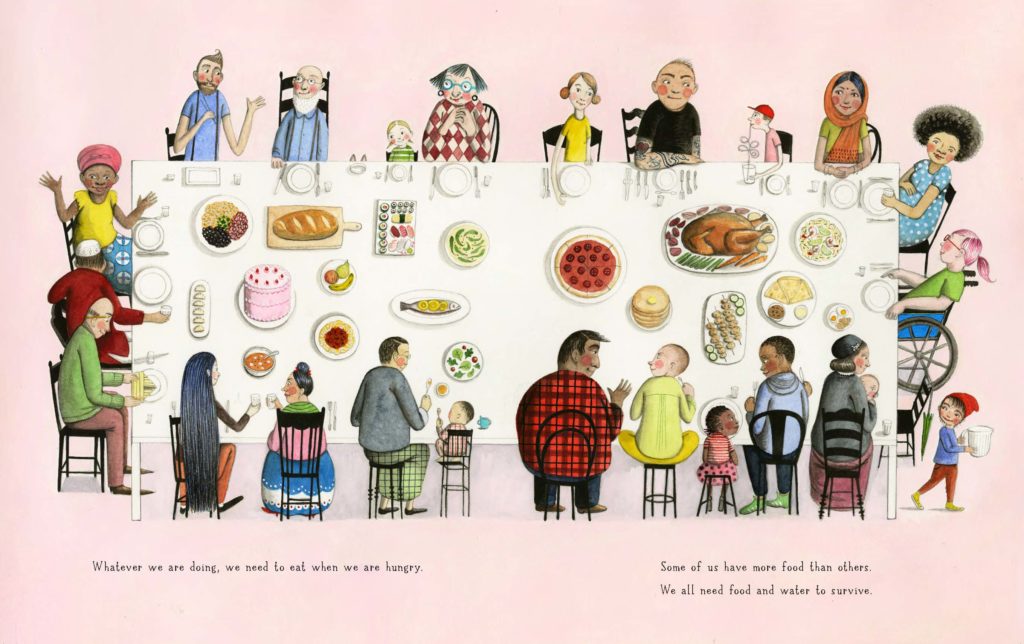
Is there anything else that you would like to share about yourself, If You Come to Earth, or any future books?
Yes, there is! Did you know I am building a rural retreat for children’s book people? We are renovating a 19th-century dairy farm in the Catskill Mountains of New York and hopefully by early next Summer, it will be a place for authors and illustrators, librarians and educators, editors and art directors, scholars, agents, publishers, everyone to gather to talk and walk, write and draw, eat and drink. You can find out all about it on Instagram @milkwoodny!
—
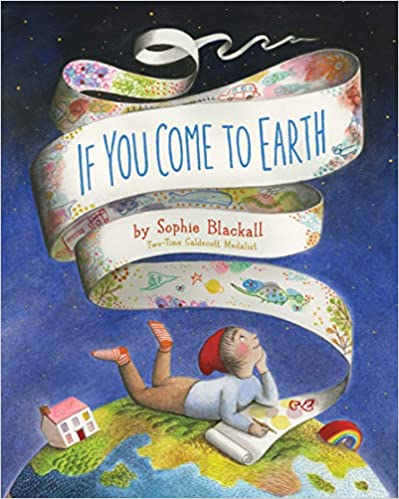 If You Come to Earth
If You Come to Earth
Written and Illustrated by Sophie Blackall
Publisher’s Synopsis: From two-time Caldecott Winner author-illustrator Sophie Blackall!
If You Came to Earth is a glorious guide to our home planet, and a call for us to take care of both Earth and each other.
This stunning book is inspired by the thousands of children Sophie Blackall has met during her travels around the world in support of UNICEF and Save the Children.
• An engaging storybook about a single curious and imaginative child
• Simultaneously funny and touching
• Carries a clear message about the need to care for the earth and each other
If you come to Earth, there are a few things you need to know. . .
We live in all kinds of places.
In all kinds of homes.
In all kinds of families.
Each of us is different. But all of us are amazing.
And, together, we share one beautiful planet.
This masterful and moving picture book is a visually comprehensive guide to the earth, imbued with warmth and humor.
• Ideal for children ages 3 to 5 years old
• Resonates year-round as a go-to gift for birthdays, holidays, and more
• A great pick for teachers looking for a crowd-pleasing picture book about the world for little students
• Perfect for parents, grandparents, and caregivers
• Add it to the shelf with books like The Travel Book by Lonely Planet Kids, Atlas of Adventures by Rachel Williams, and If You Lived Here: Houses of the World by Giles Laroche.
“Wholly fulfilling is two-time Caldecott award-winning author-illustrator Sophie Blackall’s If You Come to Earth…” —The Children’s Book Review
Ages 5-8 | Publisher: Chronicle Books | ISBN: 978-1452137797
Buy the Book
About the Author-Illustrator
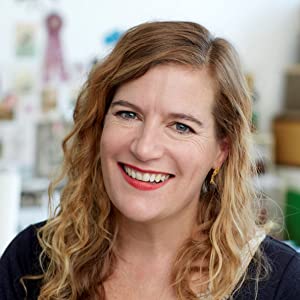
Sophie Blackall has illustrated many books, including the Ivy + Bean series, Ruby’s Wish, and has twice won the Caldecott Medal. Originally from Australia, she now lives in Brooklyn, New York. Learn more about her at www.sophieblackall.com.
This interview—Sophie Blackall Discusses If You Come to Earth—was conducted between Sophie Blackall and Bianca Schulze. For similar books and articles, follow along with our content tagged with Australian Authors, Diversity, Inclusion, Picture Book, Sophie Blackall, and Travel.

